Last updated: 30 Apr 2023
Intro
Many new woodworkers often struggle with understanding the different types of clamps available on the market, leading to wastage of money and resources. This post aims to save you from such predicaments and provide insights on some of the specialty clamps that you may not have been aware of.
C-Clamps
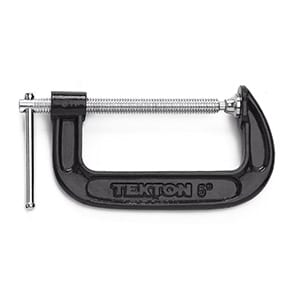
C-clamps used to be the go-to clamp for woodworkers metal workers pretty much everyone. And while some folks still like them I don’t find them that useful for woodworking. They’re heavy, especially the bigger ones.
Tightening C-clamps can be difficult and the pads can sometimes get stuck, causing them to rotate with the screw and misaligning your workpiece as you apply pressure. However, C-clamps are capable of applying a significant amount of pressure, which can potentially leave marks on your workpiece if you’re not cautious.
Handscrew Clamps
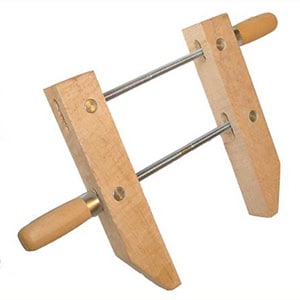
Handscrew clamps are too often dismissed as old-fashioned by modern woodworkers. The fact is they’re very useful. First, they’re strong you can exert a ton of pressure with these. Yet the wooden jaws are less likely to mark your work surfaces.
The jaw angles are also adjustable making it possible to clamp tapered workpieces. They often have extra throat depth for a longer reach although the more throat depth the bigger the clamp will be. And they can be used in creative ways such as holding small parts at the router table or the drill press or holding project parts upright during assembly.
Spring Clamps
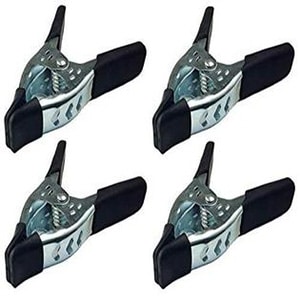
A lot of woodworkers tend to purchase numerous spring clamps as they are generally inexpensive, and they can be useful for some tasks. They are ideal for lighter projects where many clamps are needed, but the cheaper ones do not apply a considerable amount of pressure.
The spring clamps can be used to keep glue surfaces aligned or jigs or clamping power cords up out of the way anywhere you want to hold something fast and remove it just as quickly. Some include ratcheting mechanisms that help them to grip tighter but it makes them less quick to use. Bandy clamps are a clever idea with little rubber bands in the throats.
F-Clamps
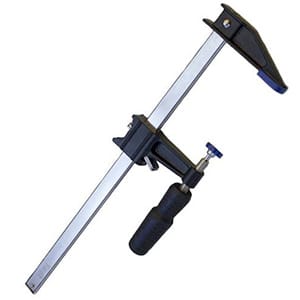
F-style clamps are among the most common in small shops because they’re relatively inexpensive they’re versatile and they’re super strong. They come in various lengths and are pretty lightweight. The screw head can exert a lot of force but longer lengths can bow under too much pressure and the pads can seize up like on C-clamps which makes them turn with the screw and makes it difficult to keep your parts of lines. There are versions of clamps with a piston-type mechanism that doesn’t turn as the clamp tightens.
There is another alternative design that doesn’t use a screw at all, but instead has a cam or a ratcheting mechanism on the end. These are quick to set and work well, but they don’t provide as much clamping pressure as the screw type. Additionally, there isn’t much play between the jaws, which means you won’t have as much control in forcing workpieces into alignment.
Pistol-Grip Clamps

Pistol-grips are perhaps the most convenient clamps in my shop because you can operate them with just one hand. Good ones will apply a decent amount of pressure more than enough for most glue-ups but cheap versions will break if you tighten them too much.
Pipe Clamps

Pipe clamps have been popular for generations due to their strength and availability in different lengths. They come in half-inch, 3/4-inch, and one-inch varieties. However, the biggest drawback of these clamps is their weight, particularly for the 3/4-inch and one-inch versions. They work best for gluing up panels where you can lay them on the bench and place your boards on top.
However, if you have a big piece of furniture and you need to force a cup or abode board into place these will do the trick because they’re that strong. The best feature is you can buy a few of the clamp mechanisms and swap them between different lengths of pipe as needed. You can even connect two or more pipes with couplings to make a super long clamp.
Bar Clamps
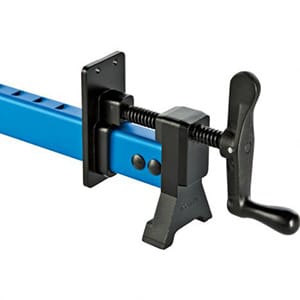
Bar clamps are lighter alternatives to pipe clamps. They’re pretty inexpensive and work well for panel glue-ups. The shallow throat depth makes them difficult to use for project assembly but that’s a drawback with pipe clamps as well. And they aren’t nearly as strongest pipe clamps but most edge glue ups don’t require a great deal of clamping strength.
Parallel Clamps
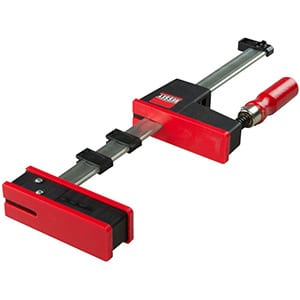
Parallel clamps are named as such because their jaws remain parallel to each other as they tighten, making them ideal for gluing boards edge to edge without forcing them to warp or bend. They are just as strong as pipe clamps but are more convenient to use on a benchtop as they can stand side by side while you position your boards.
And unlike pipe clamps, their larger jaws make them more useful for project assembly. The downside is they can be heavy and a little bit expensive.
Band/Strap Clamps
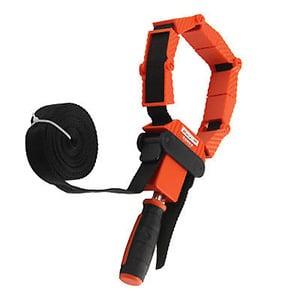
There are several types of band clamps on the market and I like them for gluing up mitered frames and boxes or for awkward shapes like cylinders and polygons. Simple ratchet straps can be used for this purpose. But I prefer those with corner brackets. Many woodworkers neglect band clamps when they’re building their collection.
Miter Clamps
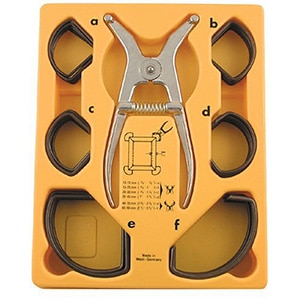
A corner clamp is a great option for those who assemble a lot of mitered frames. It can hold two sides at a perfect 90-degree angle while you apply glue or use pin nails. Although there are four corners on a frame, you may only need one corner clamp if you use mechanical fasteners.
If you make cabinets you may find face-frame clamps useful because they’ll hold the frame in place while you bore your pilot holes and set the screws.
Face Clamps
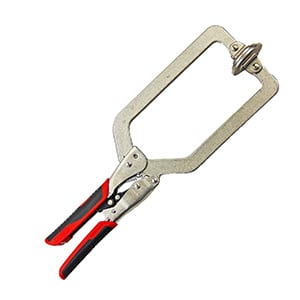
Face clamps remind me of vise grip brand plier but they have flat pads instead of tooth jaws. I like them because they’re fast to use especially the newer versions that adjust the tension automatically. Face clamps come in different styles including deep throat versions corner clamping versions and pinned end versions for securing pocket hole joinery while you drive home your screws. They do make bar clamp versions as well but I find them less convenient than regular F-clamps if only because that’s just what I’m used to using.
Recommendations
The common saying is that you can never have too many clamps, but I disagree. I have too many clamps, not because there’s a magic number, but because I have a lot of clamp types that I simply don’t use. For example, I have a bunch of pipe clamps that mostly just hang out in the storage shed. They’re heavy and clunky, and other clamp styles do the job just as well.
I also have a lot of spring clamps that I bought cheap at a tools store and they sort of hang around. They can be handy but I don’t need three or four dozen. Which clamps are best for you depends on the work you do and your personal preference.
I hate pipe clamps but some folks love them. I like pistol grip clamps and some folks hate them. Usually, the clamps you are used to are the ones you like. And the ones that you’ve never used before are the ones you have a hard time falling in love with. So all I can do is tell you what clamps I like for my work. And that includes a variety of styles each with its purpose.
I like F-Clamps because they’re inexpensive strong lightweight and versatile. I use them when I’m clamping project parts together. I like at least two of each size available if you can afford it. I also really like parallel clamps. They’re perfect for gluing up panels and laminations and the longer ones can apply a lot more pressure to big tough project assemblies than other clamps can. Because they’re expensive I recommend buying medium-sized ones to start and expand from there as your project demands in your budget allow.
If you plan to glue-up multiple panels simultaneously and you can’t invest in a large number of parallel clamps, consider purchasing some affordable aluminum bar clamps. In my experience, the 12-inch versions are the most versatile. You can start with buying four at a time and gradually expand your collection as needed.
Additionally, I recommend having at least two band clamps, which can be invaluable for certain projects. Another type of clamp that I find incredibly useful is the pin-type vise grip style, which is great for holding pocket screw joints together. If you work with this type of joinery, I highly recommend having a few of these clamps in your toolbox.
For small parts holding and other miscellaneous tasks, I like a few spring clamps and a couple of wooden screw clamps as well. So if you want a good starter set of clamps I recommend 6 to 8 F-Clamps for parallel clamps for pistol grip clamps 2 band clamps for spring clamps and 2 wooden screw clamps. Then see how it goes you may find yourself using one style a lot more than others. And that’s the one you should invest more money into.
If you need some of the specialty clamps I mentioned get them. But don’t buy a bunch just because you think you may need them to wait until a project comes up. I hope this quick tutorial saves you some money and better equips you for your next woodwork project.
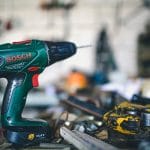



Leave a Reply